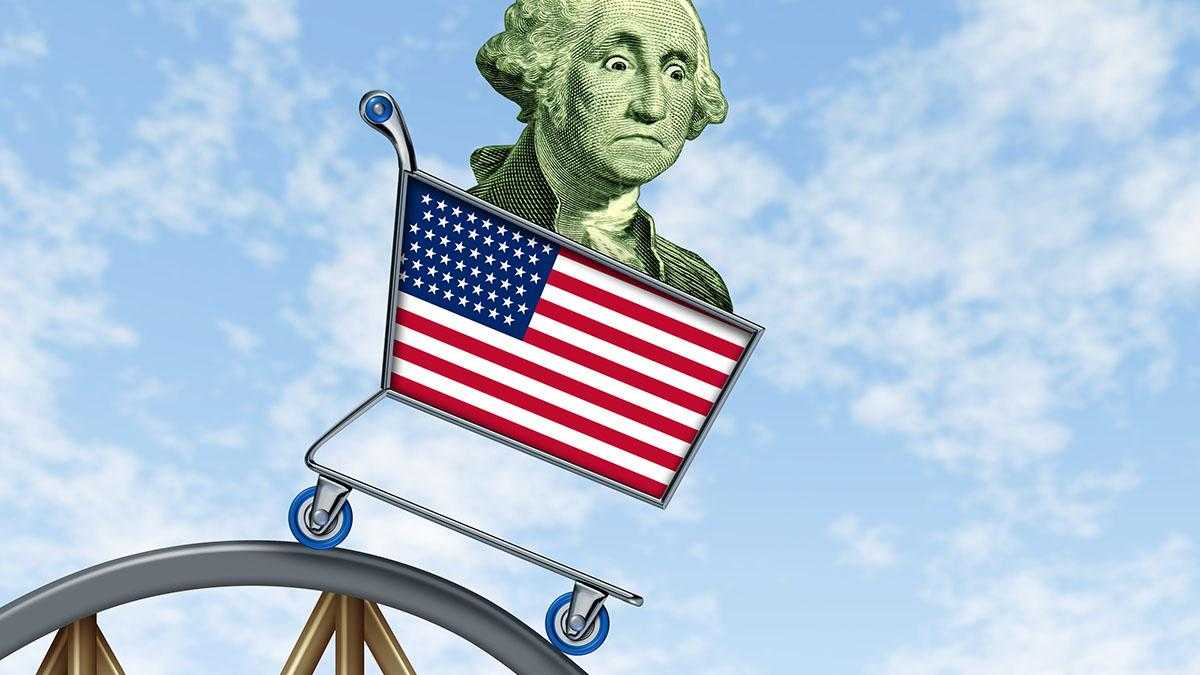The Federal Reserve
The dollar retreated against most major currencies on Thursday with the catalyst being the Federal Reserve’s cautious U.S. economic outlook. The move seems to suggest the central bank is nearing the end of its tightening. On Wednesday, the Fed’s dovish tone unexpectedly shocked the markets despite consistently reiterating patience and balance sheet flexibility.
The felling in the city and Wall street is this is a flat-out U-turn on previous policy
Interestingly, the last two months has seen the dollar fall 2% on the dollar index (the metric which tracks the currency versus six major rivals). It’s the poorest two-month performance in a year.
On the back of the policy statement, TD Securities changed its Fed forecast – it predicts the Fed to hike just one more time (instead of twice).
On the release the dollar dropped 0.14% against the Yen, 0.04% vs the Swiss Franc and 0.31% against the Euro. Other major currencies like the Aussie and Kiwi dollars rallied. The CAD moved positively thanks to 15% oil price rises.
Away from the Fed, fundamental data showed American citizens filing for unemployment benefits surged to close to an 18-month high. Any lagging data coming form the USA is to be taken with a pinch of salt thanks to the five-week shutdown of the federal government although it has reopened now. U.S. new home sales rose nearly 17% in November but the dollar didn’t react.

Theresa’s May rare show of strength
To compound pressure on the dollar, Sterling managed to rise against the US dollar on the day after Prime Minister Theresa May was victorious and defiant when the ‘Brady’ amendment was passed by a comfortable majority. The ‘Brady’ amendment relates to the ongoing issue of the Irish backstop and aims to replace it with an ‘alternative arrangement’. The reason for the strength for the Pound is investors are relieved that the Brexit deadlock in Parliament has been broken. The proof is in the pudding with all eyes on Mrs May’s hoped for re negotiations with Brussels over the controversial Irish backstop. The Brexit secretary, Steve Barclay, said: “What we saw in the vote was a clear mandate to take back to Europe to say this is what Parliament will support. What came through in the previous debate is that there is a central concern on the backstop. It was a vote on the deal if this central concern can be addressed.”
The EU has previously warned that the Irish backstop is not open for renegotiation and on the back of the results from the vote, many influential leaders and figures from the EU block came out to reiterate that the deal offered by the European Union as the only deal that was on offer and will be. This pulled some of the pound’s gains.
Staying with the UK, economic data published about the UK mortgage approvals for December showed a fall against the previous month to just under 64K. It was better than expected but possibly a clear indication of lenders becoming risk adverse thanks to the uncertainty of Brexit.
UK lending figures were released too with consumer credit falling to £0.687bn, indicating that people are tightening their spending.
US dollar traders watched closely at Federal Reserve interest rate decision, where they kept the rate unchanged at 2.50% describing US growth as “solid.”
The US dollar failed to gain on the pound specifically as concern mounts over the economic impact of the recent US government partial shutdown and a continuing uncertain Brexit outcome. Everything hinges upon Brussels approving changes to the Irish backstop.
The ratings agency, Moody’s, said: “If another shutdown occurs, there could be a more severe impact on the US economy than during the recently ended shutdown.”
Impressive Economic data with unimpressive results
Wage growth up 3.2% year on year, this reading is in unison with October and December 2018’s reports as the fastest pace of wage growth seen since April 2009.
Headline jobs growth came in at over 304K; the January US Non-farm Payrolls report blew the 165k estimate out of the water. Unemployment rose 0.1% up to 4% but it came alongside a healthy expansion of the labour force participation rate from 63.2% to 63.1%. This rise in the unemployment rate can be explained because there were more new entrants in the market than available jobs.
The US Dollar gained ground immediately following the data, but this quickly faded as memories of the US government shutdown from the previous 5 weeks led to predictions of reduced Q1’19 growth.
Following the January FOMC where Chair Jerome Powell dictated “patience” traders are clearly not buying into the idea the US economy is “solid” as the china tension linger on unsolved and seemingly hurting both sides.
Immediately after the releases, the US Dollar went up and down against the Yen and took a while to settle. It highlights how the main standard bearer for global currency and one of the so called “safe haven” currencies can, at the moment, due to the above reason, be one of the most volatile currencies in the market.